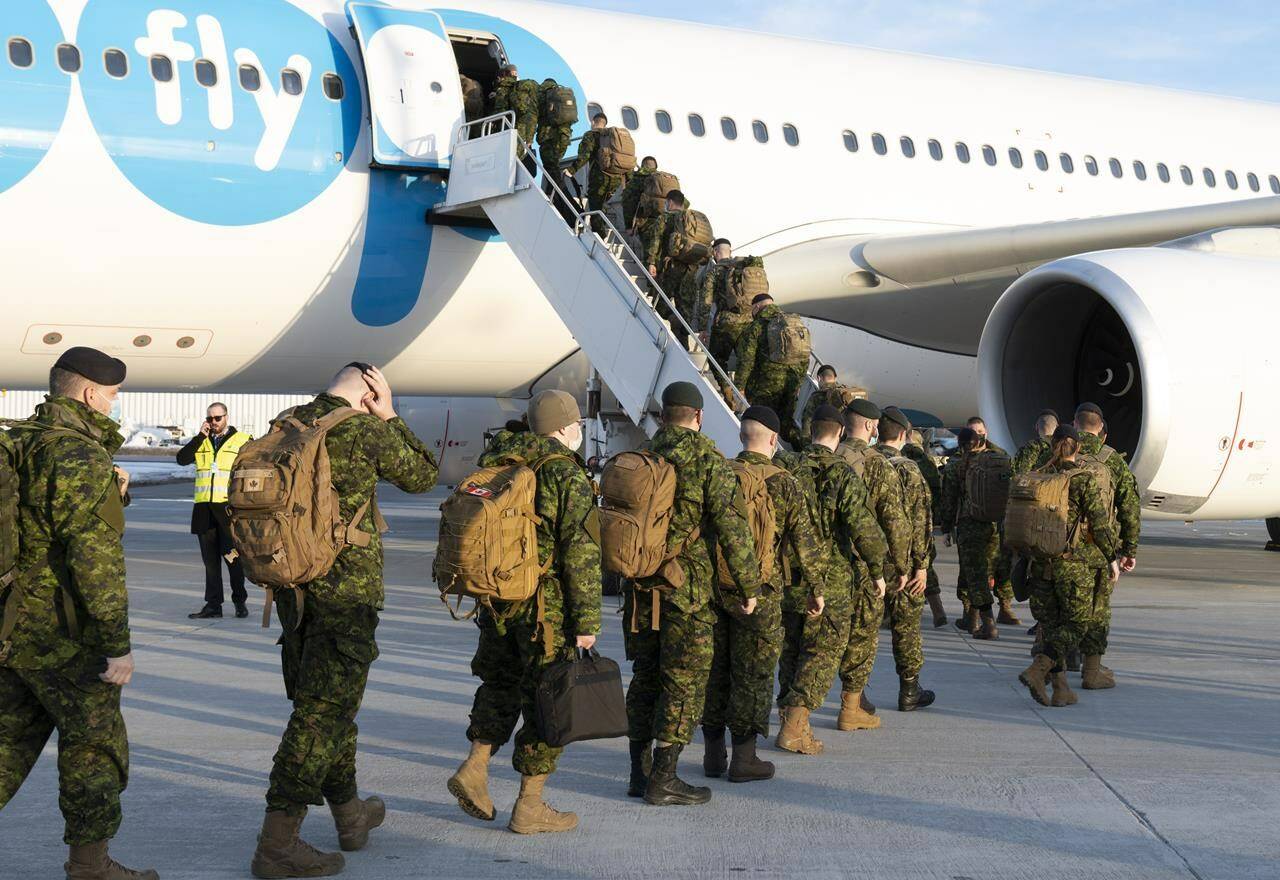Canadian Armed Forces will be deployed to help fight the unprecedented wildfire season that’s led to evacuation orders in the Northwest Territories.
The Canadian Armed Forces is preparing to send 124 soldiers Tuesday (Aug, 15) to help in firefighting efforts in the territory.
Additionally, the military will be sending one helicopter and one Twin Otter to assist in the NWT’s ongoing wildfire and emergency response.
“Over the past 24 hours or so there has been an airlift like this territory has never seen,” N.W.T. fire information officer Mike Westwick said Monday.
“Planes flying out of Hay River, planes flying out of Fort Smith, planes flying out of Jean Marie River.
“The highways are compromised. It’s a very serious situation.”
No injuries were reported and no one was believed to be missing.
Firefighters were in tough against flames driven by winds gusting 60 to 70 kilometres an hour in some areas, said Westwick.
On Sunday, those winds pushed the flames through a firebreak and within 30 kilometres of the territorial capital of Yellowknife. The city is not considered threatened, but residents have been told to prepare to leave.
“The city is very smoky,” Westwick said. “Yesterday, we saw dark clouds of smoke envelope the city. We saw falling ash. We do expect that to continue.”
Evacuations were ordered for areas north of Yellowknife and along Highway 3, which heads west.
Meanwhile, members of the Canadian Forces have been deployed to help deal with the wildfires.
On Sunday, winds drove the Kakisa fire within 25 kilometres of Hay River. Local officials reported all long-term care residents and hospital patients were transported to Yellowknife, and 215 people were flown to Grande Prairie, Alta.
There was significant structure damage in the hamlet of Enterprise. Damage was also reported of Northwestel fibre lines as well as some electrical lines.
“Communications have been challenged in a big way,” said Westwick.
Firefighters were arriving from other jurisdictions, and four helicopters and water bombers were en route.
A National Defence spokeswoman said a reconnaissance team was on the ground in the community along the south shore of Great Slave Lake. She did not say how big the team was, nor what equipment or capabilities they were bringing with them.
“The mobilization of the Canadian Armed Forces will ease the stress on the territory’s resources and allow the (territory) to continue to provide essential services to evacuees during this unprecedented wildfire season,” N.W.T. Premier Caroline Cochrane said in a press release.
The N.W.T. government said evacuation orders were also in effect for Enterprise and K’atl’odeeche First Nation because of the effects of a fire on evacuation routes. The community of Kakisa was also placed on an evacuation alert, with residents advised to be ready to leave on short notice.
It said the lightning-caused fire was approximately 270 square kilometres in size and increased fire activity due to extreme winds pushed it within two kilometres of the highway.
An evacuation was ordered Saturday for Fort Smith, which has a population of about 2,000, as well as for Smith’s Landing First Nation and the Alberta hamlet of Fort Fitzgerald. On Sunday afternoon, the territory’s infrastructure department said Highway 5 out of Fort Smith had closed.
The highway connects Fort Smith and the other evacuated communities with Hay River, near the south shore of Great Slave Lake, where many people were taken before that town was evacuated.
Several fires were burning in the vicinity, but the ones that prompted the evacuation order for Fort Smith were the Wood Buffalo National Park fires, said an update issued by NWT Fire on Saturday evening.
Those fires are being fought by Parks Canada, as well as firefighters from Alberta and the N.W.T.
Alberta Wildfire said in an update Sunday that the Wood Buffalo fires were more than 4,300 kilometres in size and about 25 to 35 kilometres west and southwest of Fort Smith.
– with files from Ezra Black, Northern News Service

